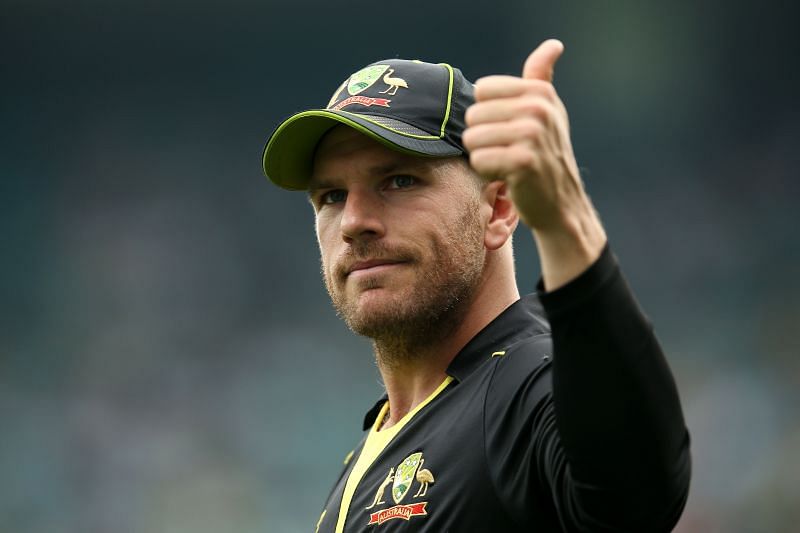
Australia show how far the mighty have fallen in T20Is
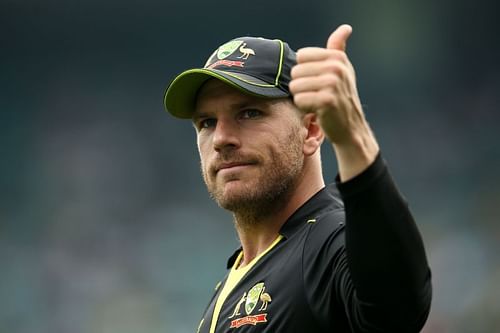
A few weeks ago, Australia stumbled to a humiliating 4-1 defeat against the West Indies in a T20I series that they could well have been whitewashed in. Australia, who were missing a string of first-team stars, looked off the pace throughout and had it not been for Mitchell Starc’s heroics and Andre Russell’s gross miscalculation in the 4th T20I, would’ve been handed an even more chastening reverse.
At that time, though, it was largely perceived that the absence of Messrs. Aaron Finch, David Warner, Glenn Maxwell, Pat Cummins and Steve Smith was to blame. Subsequently, plenty accorded Australia the benefit of the doubt and were willing to cast a blind eye, despite the Aussies being thoroughly outplayed.
Hence, massive significance was attached to Australia’s next T20I assignment – against Bangladesh and in conditions that would mirror what awaits them at the T20 World Cup. While the stellar star cast still remained on the sidelines, there was palpable optimism that this rubber would get Australia’s T20 World Cup preparations back on track.
However, the exact opposite has happened, and the visitors have already conceded the series. All of it while only playing three games – matches in which they’ve been convincingly outclassed by a Bangladesh team, who, lest one forgets, has to go through the grind of qualifying for Round 2 of the T20 World Cup.
Instantly, the inclination would be to term the Tigers’ performance as sensational and label the series triumph as an upset. Yet, on closer introspection, that hardly seems the case. In fact, for large swathes, it has seemed that any result apart from a Bangladesh win would’ve been an “upset”.
Bangladesh have been that good. Yet Australia have, somehow, been that shambolic.
Over the past few years, the Aussies’ T20I outfit hasn’t really scaled the heights expected of it. While a T20 World Cup crown has eluded them, they’ve not fared any better in bilateral rubbers.
As things stand, they’ve lost five on the bounce, with them only winning five of their 19 encounters during this period. While they’ve lost to established teams such as England, India and New Zealand, they’ve also been humbled by Bangladesh and West Indies, who, despite having a galaxy of match-winners, have historically not been at their best in bilateral competitions.
Rather remarkably, of those five wins, only two have come when the series has been on the line. Both of those came against the Kiwis when Australia restored parity in the five-game rubber, only to fall short at the final hurdle. Against England, India and the West Indies, they only notched up victories once the series had passed them by, suggesting that the opposition might’ve tinkered with their side or might not have displayed the kind of intensity associated with them.
The stats get a lot worse for Australia when talking about run-chases in T20Is. At present, the Aussies have lost eight consecutive fixtures when batting second and alarmingly, those have come in a variety of conditions and against different oppositions.
On a majority of those instances, the Australians have lost steam after the opening few overs – something that highlights their middle muddle while also illustrating that their top order hasn’t been able to drag them across the line.
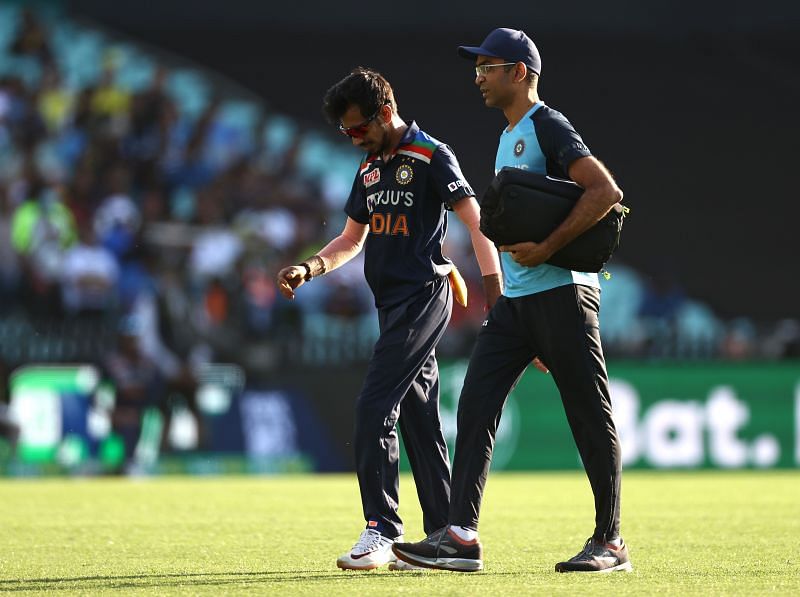
When India toured Down Under in December 2020, that tendency came to the fore in the 1st T20I. While much of the chatter post the game surrounded Ravindra Jadeja being replaced by Yuzvendra Chahal as a concussion substitute, the bare fact remained that Australia had botched another run-chase.
More worryingly, that was perhaps the start of this trend where Australia lose their way against the spinners in the middle phases, meaning that they then have too much to do at the death.
Prima facie, this could be attributed to Australia not finding adequate middle-order options – batters capable of rotating the strike and then opening up their shoulders. At this point, almost all of their alternatives are decent against pace but pretty woeful against spin.
In fact, that might’ve been one of the primary reasons why Mitchell Marsh has been pushed up to No.3 since the series in the Caribbean. Not only has it utilized the ability at Marsh’s disposal, but it has also cast light on how most Australian batters relish batting at the top of the order.
That, though, has come at its cost too. Without Marsh, who wasn’t excellent in the middle order, they’ve had to fall back on the likes of Alex Carey, Ashton Agar, Ashton Turner, Daniel Christian, Matthew Wade and Moises Henriques.
While each has proved their mettle in the Big Bash League, none apart from Christian regularly plays the role of a finisher. Instead, they all bat at the top of the order and score runs – runs that get them into the Australian team but dry up when being asked to adapt.
On the bowling front, things are marginally better, although there is still room for a lot of improvement. Josh Hazlewood and Mitchell Starc have largely held their own over the past month or so.
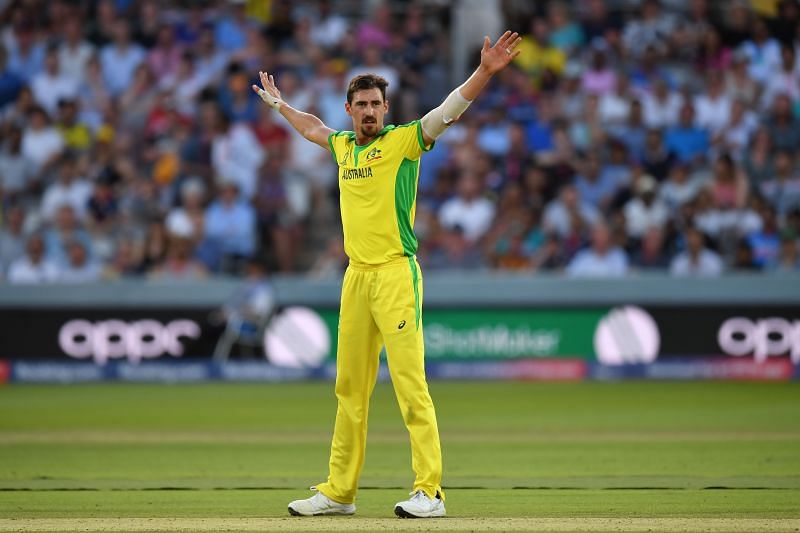
However, if the opposition decides to play them out, spinners of the ilk of Adam Zampa and Ashton Agar haven’t proven themselves capable enough to prise out wickets. The duo, which is extremely adept at piling on the pressure, isn’t as dexterous to dismiss the batter, even when he is trying to keep them at bay. And, with a T20 World Cup in the UAE, Australia would need more meaningful contributions from their spin twins.
However, most Australian fans would testify that this isn’t their strongest line-up, which considering the number of absentees, is quite realistic. With a T20 World Cup in the UAE, though, Australia might have to reconsider the notion that the presence of Cummins, Finch, Maxwell, Smith and Warner will cure all of their ailments. Not just because the rest of the team seems pretty disjointed, but also because a lot of the aforementioned cricketers have patchy records in Asia.
Australia's best batters have sketchy numbers in Asia
Finch, long regarded as one of Australia’s greatest ever T20I batter, averages 23.31 across 16 innings in Asia. His strike rate, which usually hovers around the 150-run mark, also drops 124.33 in these conditions. Similarly, Warner strikes at 130.75 runs per 100 balls (lower than his overall SR of 139.72) in Asia, with his average just a tick over 25.
Smith, meanwhile, has not played a lot of games in Asia. However, the seven times he has batted, he has struck at 99.09 and has accumulated 110 runs at an average of 18.33.
Maxwell is arguably the only aberration, for his average and strike rate zing up to 40.6 and 165.37, respectively, as opposed to a career average and strike rate of 31.78 and 158.92.
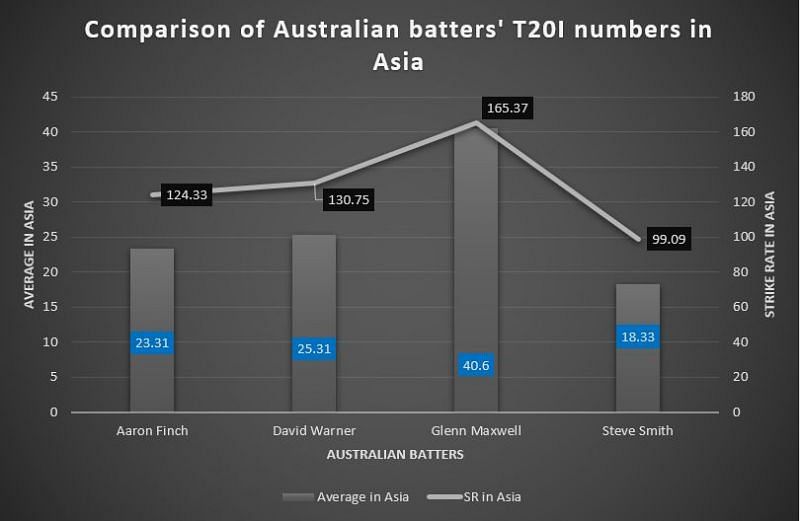
Hence, there is evidence hinting that only Maxwell might be able to immediately sway Australia’s fortunes. But that comes with caveats as well, considering Maxwell hasn’t always been the most consistent batter Australia have had in their celebrated cricketing history. And, of course, because he too prefers batting in the top four.
In simpler terms, Australia are a team in turmoil. Their batters aren't scoring the requisite amount of runs, and even when their top order does so, the middle order contrives to undo their good work. If somehow the aforementioned clicks, the bowlers, barring Hazlewood and Starc, don’t seem potent enough to prevent successful run-chases.
As ludicrous as it may sound, they are perhaps also the team that everyone wants to face come the T20 World Cup. Not just because they are an outfit totally devoid of confidence, but also because they generally put their worst foot forward in such conditions.
Prima facie, it might seem too damning an indictment on the current state of cricketing affairs in Australia. Yet, it has come to this. And there is plenty of truth to it, make no mistake about it.
The mighty have endured a stunning fall from grace in the shortest format, and at this juncture, it doesn’t take rocket science to figure out that Australia’s T20 World Cup preparations, which were supposed to gather pace in July and August, has been ripped to shreds.